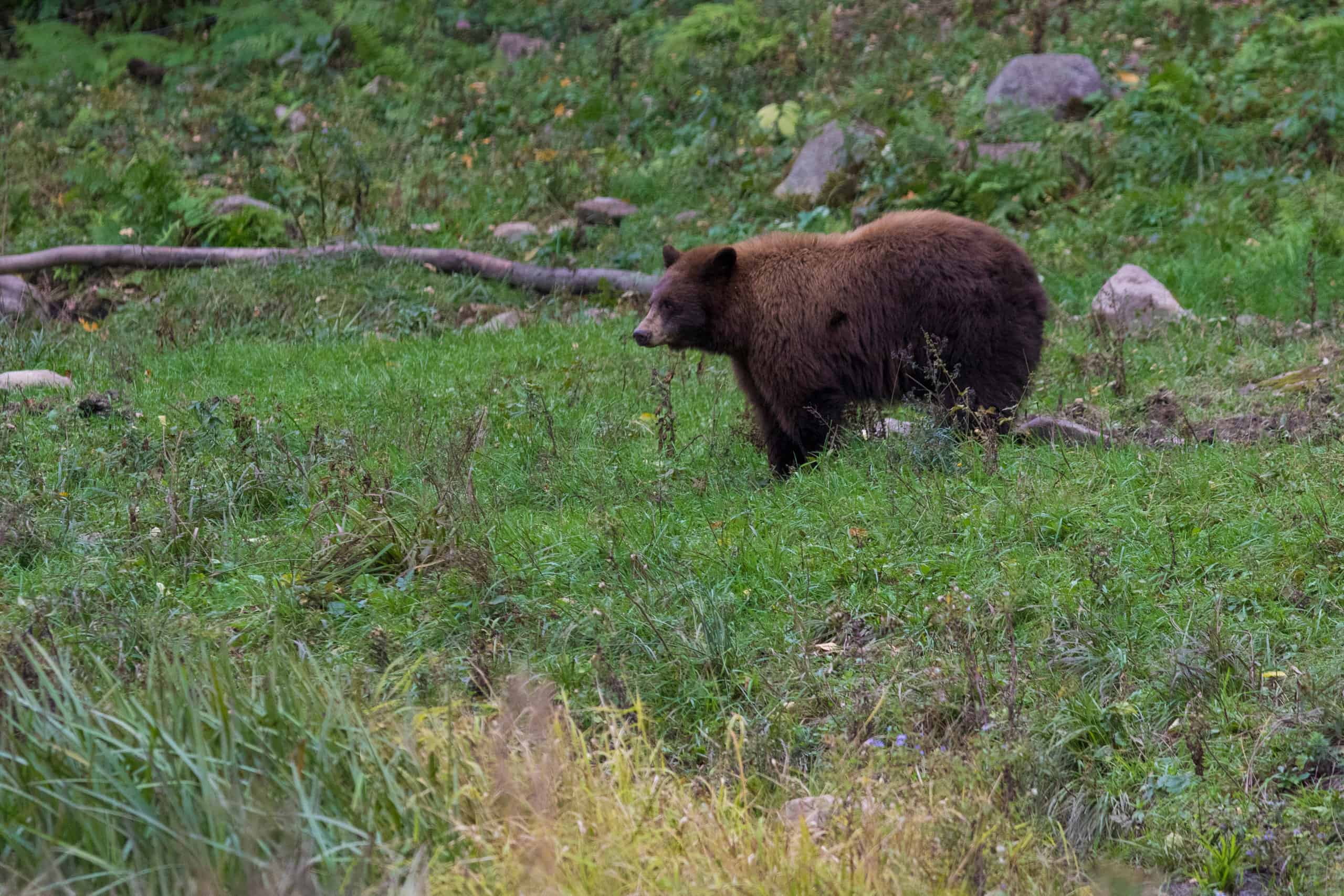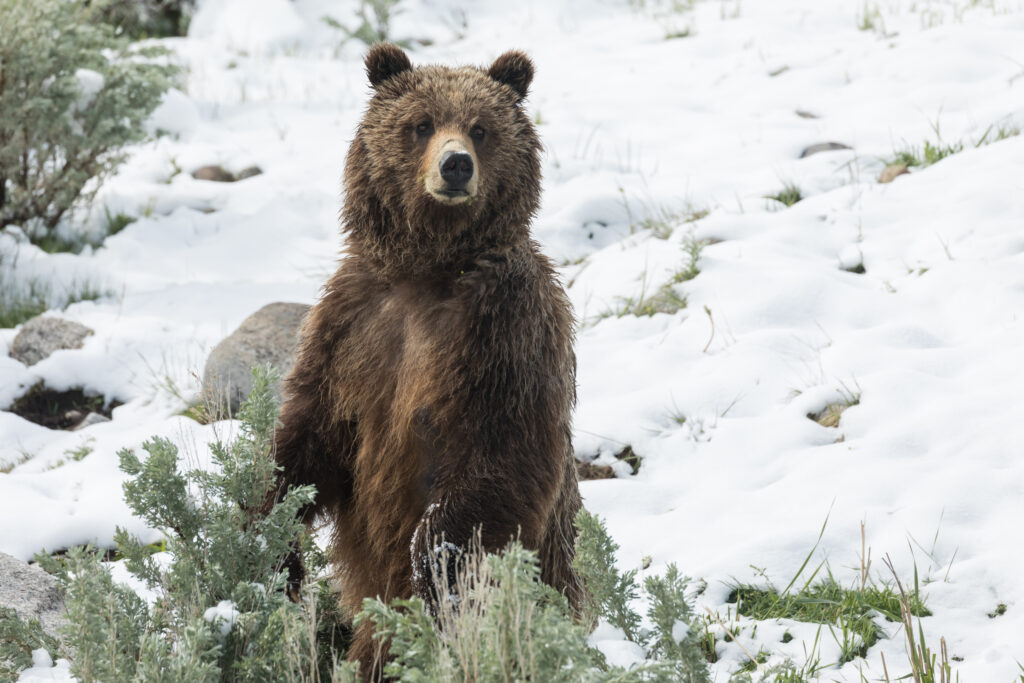Continue reading for our analysis...

Grizzly bears are strong apex predators despite being primarily vegetarians. The bears are capable of running up to 35 miles per hour over small distances, have a good sense of smell, and can kill young or frail caribou, deer, and elk.
Grizzlies are excellent fishers; they are able to capture salmon in mid-air. Grizzly bears also use their claws for digging out buried mice. A video from Lake City, CO shows a unique moment when a grizzly expertly hunts a lone elk.
Typically, a hungry bear stalks its target before ambushing it from behind. The bear doesn’t often make any defensive noises, such as puffing or hitting the ground. It may have its head down low and its ears back, with its concentration on the target.
In this particular video, the bear chases the elk away on a steep hill, before pulling back toward the valley. It is then that we see the grizzly is being strategic. It can’t just attack at any moment.
When the moment comes for the elk to run for its life, an attempt is made. We’re curious if the elk was juvenile, injured, or sick. Typically, animals can outrun bears if they’re in good health. In fact, elks can run up to 45 miles per hour, much faster than a grizzly.
A Surprising Twist

©fluidmediafactory/Shutterstock.com
The person who recorded the intense interaction responded to a comment on the upload of the footage. Although one moment he claims it’s a grizzly, this response says otherwise. It reads:
“We were told it was a cinnamon black bear by some of the locals. They said they don’t usually attack animals, but they were hungry because it was a dry summer and they didn’t have a lot to eat. It was sad, but amazing too.”
A cinnamon bear does resemble a grizzly, especially in coloration! In reality, it’s actually a subspecies of black bears! The main difference between cinnamon bears and black bears is their dusty brown coat.
In addition to occasionally consuming bugs, small mammals, fish, and dead animals, cinnamon bears primarily eat plants, nuts, fruit, and honey. If the locals were right, this bear simply attacked the elk calf because it was so hungry.
The cinnamon bear stalks animals when needed and is a skilled swimmer and mountaineer just like a grizzly. Just watch how easily it scales the intensely inclined mountainside in the video below! Throughout the Rocky Mountains and in Colorado, they are frequently encountered.
Is It Normal for Bears to Hunt Elk?

Surprisingly, bears eat a wide range of different foods.
©iStock.com/Matt Kaminski
Grizzly bears typically avoid targeting healthy adult elks as they are too swift, but they will pursue young calves. Elk calves that are less than four weeks old haven’t developed the speed required to escape from grizzly bears. Additionally, elk that are injured might also be vulnerable to grizzly bear predation.
Grizzly bears mainly eat insects, grass, broad-leaved herbs, tubers, sedges, berries, and roots. Apart from these foods, a grizzly bear will often get its daily nourishment from salmon, deer, moose, ground squirrels, mice, bison, and marmots.
How Big Are Grizzly Bears?

Mother grizzly bears are ever vigilant in monitoring the whereabouts of their cubs.
©Kelp Grizzly Photography/Shutterstock.com
Grizzly bears are an iconic symbol of the American West, and they can be quite large. On average, a grizzly bear stands between 5 and 7 feet tall when on all fours and can weigh up to 800 pounds!
Grizzly bears are omnivorous creatures that consume both plant matter and small animals. They inhabit open and partly wooded areas and can now be found in Wyoming, Alaska, Montana, Idaho, Washington, and potentially southern Colorado, as well as western Canada. In the past, grizzlies had a much larger range that extended from Alaska to Mexico. However, their numbers have since dwindled due to human activity.
Grizzly bears are an important part of the ecosystem and help to keep populations of other animals, such as deer and elk, in balance. They are also incredibly strong and powerful animals who can run at speeds of up to 35 miles per hour! Sadly, due to loss of habitat and hunting, grizzly bears are now listed as a threatened species in most areas. Conservation efforts are important to ensure this species continues to thrive.
Thank you for reading! Have some feedback for us? Contact the AZ Animals editorial team.







